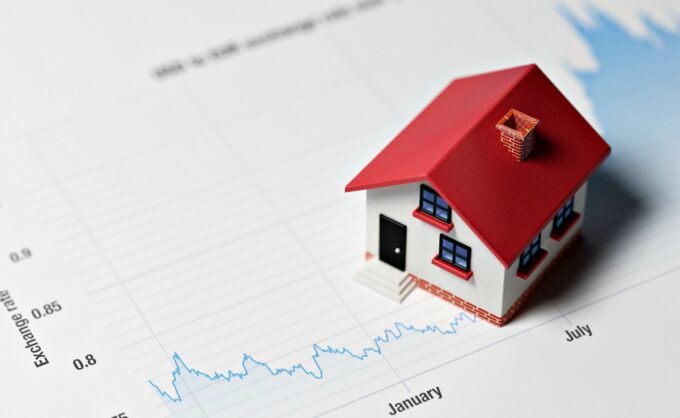Let’s face it! Investing in real estate has its fair share of challenges. Repairs and maintenance costs can add up and take much of your profits. All isn’t lost, though. Have you ever imagined being a landlord and not deal with such issues? Leasing your property will help you achieve this and more.
What are the different types of lease options to consider?

There are various types of lease agreements, like these at EZlandlordforms.com, and all vary from one property to another. It’s then critical for both tenants and landlords to understand what the lease option covers. It’s also important to know the expenses excluded.
Examples of ordinary expenses in real estate properties are;
- Properly taxes
- Interior& Exterior maintenance
- Property insurance
- Structural maintenance
- Plumbing
- Cleaning
- Utilities and more.
Some leases push most of the expenses to tenants while others divert them to the landlord. Let’s understand the standard lease options;
1. Triple Net Lease

A triple net lease is a great option for real estate investors. It’s a kind of lease agreement where the tenant caters to most of the operating expenses. The tenant also remits the agreed amount of lease rent. Some of the costs that a tenant is accountable for include regular maintenance, area upkeep, insurance, and real estate taxes. In this lease agreement, the rent amount is lower than what you would expect from the property.
A triple net lease can apply to single or multi-tenant buildings. In the cases of a single tenant, the lessee handles the landscaping and exterior upkeep. Similarly, in multi-tenant properties, you will control the exterior maintenance. But the tenant pays a share of the operating expenses. However, most people mistake it with the double net lease. And this is why signnn.com highlights the differences between the two lease options. If you’d like to find out more, check out this article by RealVantage to learn more about triple net lease and how to use them.
2. Double Net Lease

A Double Net Lease is a rental agreement whereby the tenant covers two-thirds of the cost of the primary expenses. These are property taxes, insurance premiums, and utilities. It’s your responsibility as the landlord to maintain the property in good condition. This involves repairs, improvements, regular maintenance, and any unexpected operational or structural costs. This aspect makes the agreement different from the Triple net lease, where the tenant handles the property maintenance costs.
Can I tell you more about the difference? In this type of agreement, the tenant caters to the tax and insurance premiums, but you must be ready to cater to all the property maintenance costs and upkeep.
3. Full-Service Lease

This type of lease covers most of the operating expenses. You, as the landlord, pays the property taxes, insurance, utilities, maintenance costs, and more. These leases are common in multi-tenant or office buildings. In such structures, it can be challenging to subdivide utility costs among tenants. In full lease agreements, the rent is relatively high. Also, the landlord enjoys control of the property, maintenance, and appearance.
4. Absolute net lease

An absolute net lease is a rental agreement that pushes all the property expenses to the tenant. These include;
- Taxes
- Insurance
- Parking lot maintenance
- Structural repairs
- Roof repairs
The lease option is common in single-tenant buildings whereby your build as per the tenant’s specifications and give a long-term lease. In this agreement, rates for large office space for rent are lower since the tenant caters to all the expenses.
5. Modified gross lease

This rental agreement binds the tenant to pay their utility bills, interior maintenance, and janitorial. As the landlord, you pay the taxes, insurance, structural and roof maintenance. The rent rates are higher than in triple net leases since the landlord handles most of the expenses.
What are the benefits of lease options to the property owner?
Lease agreements benefit landlords in myriad ways. These include;
- Greater tenant responsibly
In lease agreements, tenants live under the assumption of owning the property in the future. For this reason, many take care of the property than an average renter. This helps maintain the building in good condition and minimizes maintenance costs. Also, most renters end up not buying the property. And you can continue renting to them or put up the property for new renters.
- Timely rental payments
A lease agreement can include rent payment on specific dates. This binds the tenant to credit the rent amount at specified dates. This way, you don’t have to bother about rent arrears since the tenant is responsible for paying on time.
- Tax benefits

You’ll enjoy tax benefits like depreciation and investment tax credits that are not applicable to tenants. As the asset owner, you can claim depreciation as an expense and get tax benefits.
- Balanced cash flow
With leasing, the payments spread over to many years. These save the burden of one-off cash payments. With property leases, you can maintain steady cash flow over the lease period and even extend it if the client wishes to continue renting.
- Property maintenance
In most lease agreements, the tenant is responsible for the property’s maintenance. This leaves your property in perfect condition, making it easier to attract other tenants after the expiry of the lease period.
- Better planning
Lease expenses usually remain constant over the lease period or asset’s life. And this helps plan expenses or cash outflow when budgeting.
What should I do before leasing my property?
Research widely and understand the real estate market. Know the prevailing rates for commercial and residential properties in your area. Find out about the lease rates and define your target tenants. Moreover, check on your zoning, and know what your property is zoned for. The laws keep on changing, and it pays to have updated information on all the regulations.
That’s not all! You need to assess your asset management capacity. Managing a property, particularly commercial buildings, can be hectic. You may want to involve a leasing company if dealing with multiple tenants. The professionals can help you execute several projects and also perform energy audits on your property.
Lastly, know your tax situation. Check for changes in federal and state taxes and plan for any changes in the allowable regulations and deductions.
The bottom line
Nowadays, leasing is a favorable option for many. It benefits both the tenant and the property owner alike. Before you decide to lease your property, understand the different types of lease agreements. Also, know their pros and cons, and choose a deal that matches your requirements.









